We must have a look at the standard technical kayaking terms ahead of buying a first kayak. Seeing that would clear a lot of things in our minds, so let’s sneak a quick look.

Important Kayaking Terminologies For Whitewater In 2022
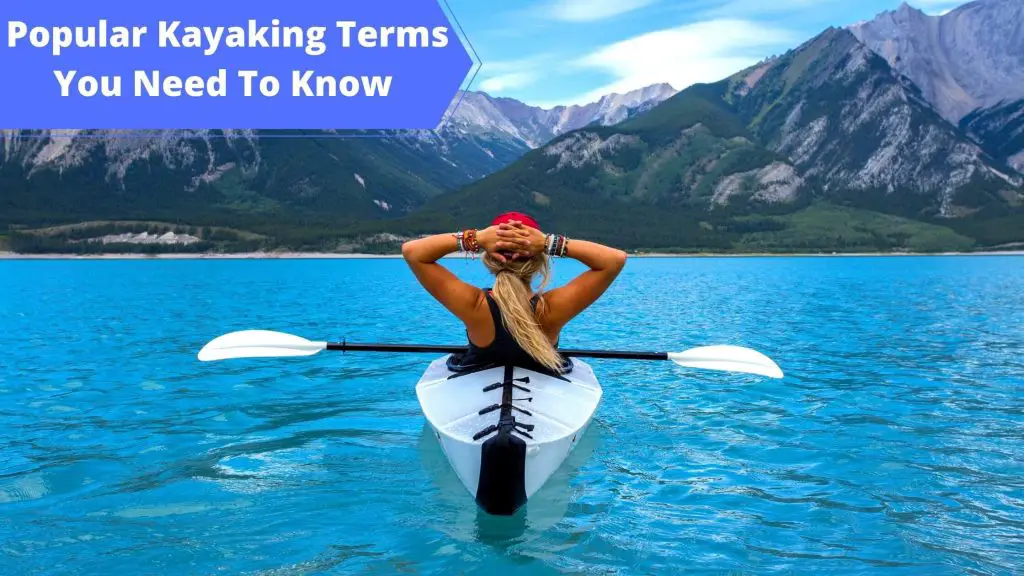
Take the time to become familiar with this list of kayaking terms so you can speak the common language with your fellow kayakers. The basic terminology remains the same for the fishing kayaks too.
Back Stroke
The method used to move backward by pushing the pedals through the water.
Baja Sleigh Ride
When a big fish gets hooked and causes the kayak to move in circles.
Bearing
The direction in which you want to travel.
Bent Shaft Paddle
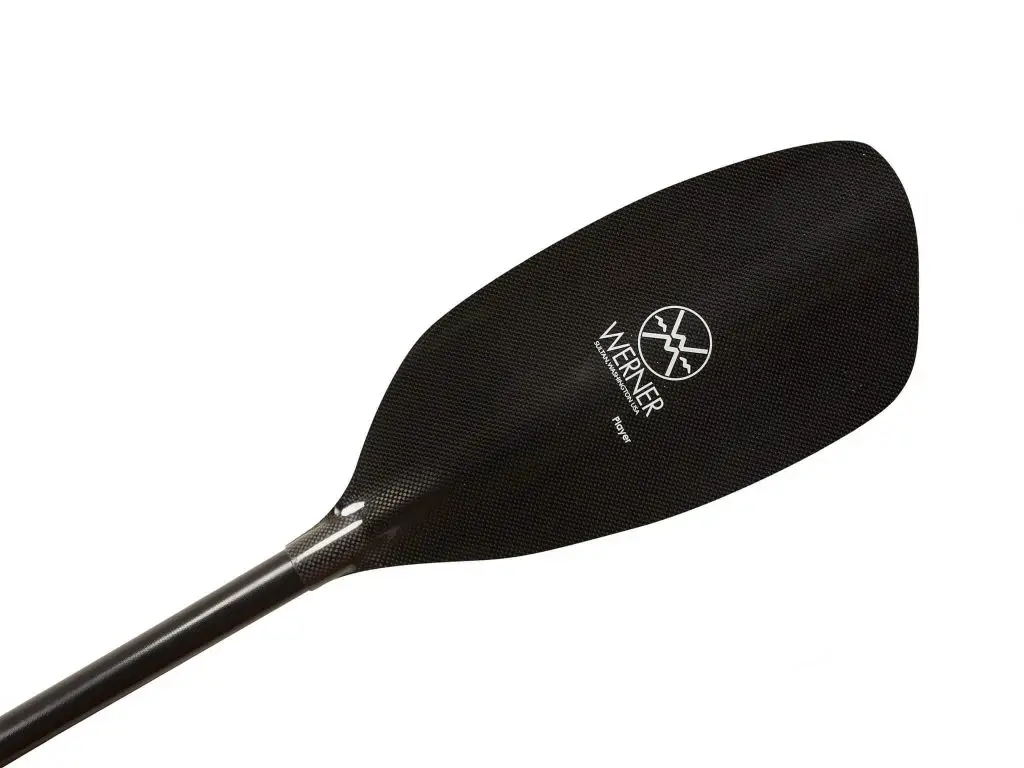
An ergonomically designed bent paddle that allows the kayaker’s wrists to sustain a neutral posture.
Blade
The wider part at one side of the paddle that pulls through the water to move the yak forward.
Boof
A technique to keep the bow of the yak above the water in whitewater conditions.
Bow
The front end of the boat.
Brace
A stroke used to hold back your vessel from capsizing.
Bulkheads
A composite, plastic, or PVC-made cross-sectional wall present inside the kayak. They provide structural support and water-tight compartments for storage and buoyancy.
Carp
When a panic-struck paddler fails to roll but manages to keep his head above the water for a quick deep breath.
CFS
CFS stands for cubic feet per second. It is a standard water flow measurement of rivers in the US.
Chine
Chine is best defined as the manner in which the base of the kayak meets the sides. It determines the overall shape of the kayak – whether it’s round, pointed, or boxy.
A hard chine is a more angular meeting while a rounded one is referred to as soft chine.
Class I Rapid
The fluent and easiest type of whitewater with the least danger to go with your kayak.
Class II Rapid
The turbulent and wavy whitewater water than Class I rapid, but still easy to handle with no consequence.
Class III Rapid
A rapid with faster flowing water and a few whitewater to maneuver around may have some consequences.
Class IV Rapid
A rapid that requires special skill and experience to maneuver around with the possibility of injury.
Cockpit
The area of the kayak where the paddler is seated.
Deck
The top side of the kayak.

Downstream
The direction of water in a river.
Drytop
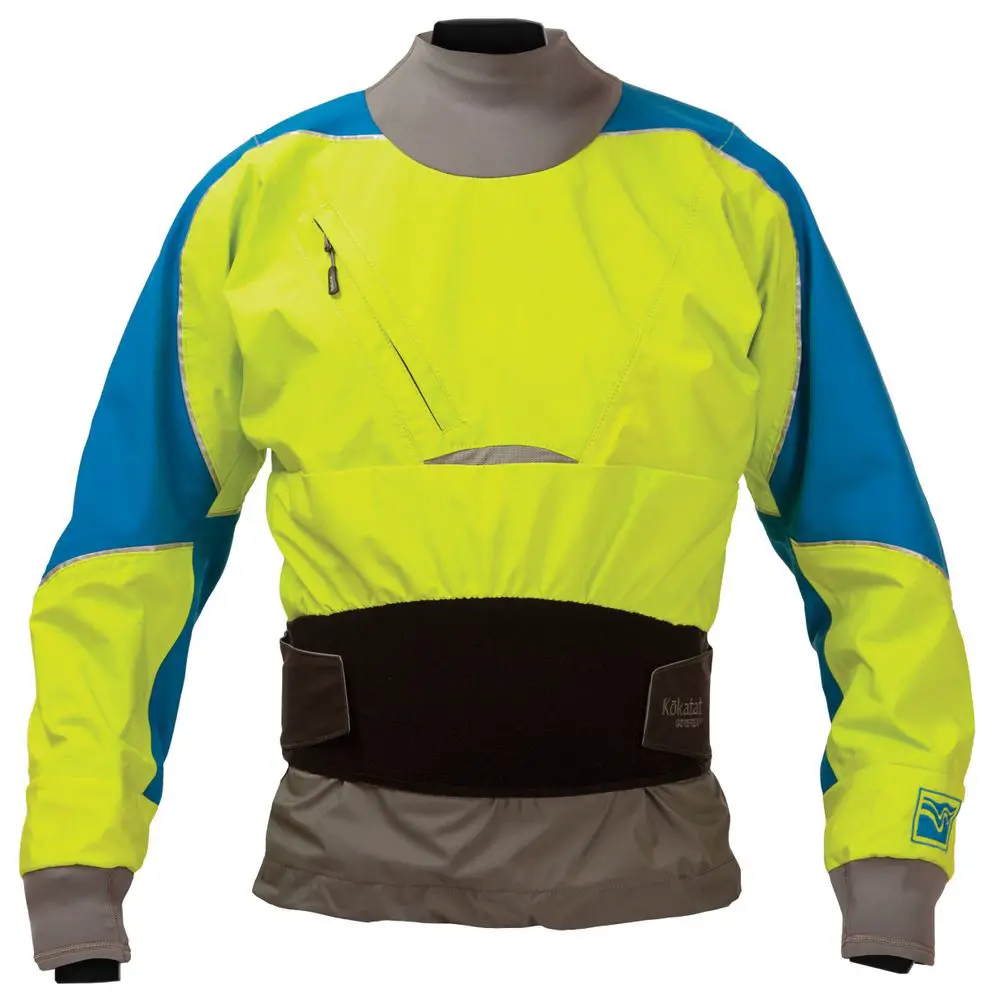
A jacket that a paddler wears to keep his upper body dry.
Edging
Edging is defined as the sloping position of the kayak when one side of the kayak is not contacting the water. Tilting a kayak creates more water friction on one side and helps it turn faster.
Ferry
The technique used to cross the river from one end to the other with the river flowing downstream.
Footpegs (Foot Braces)
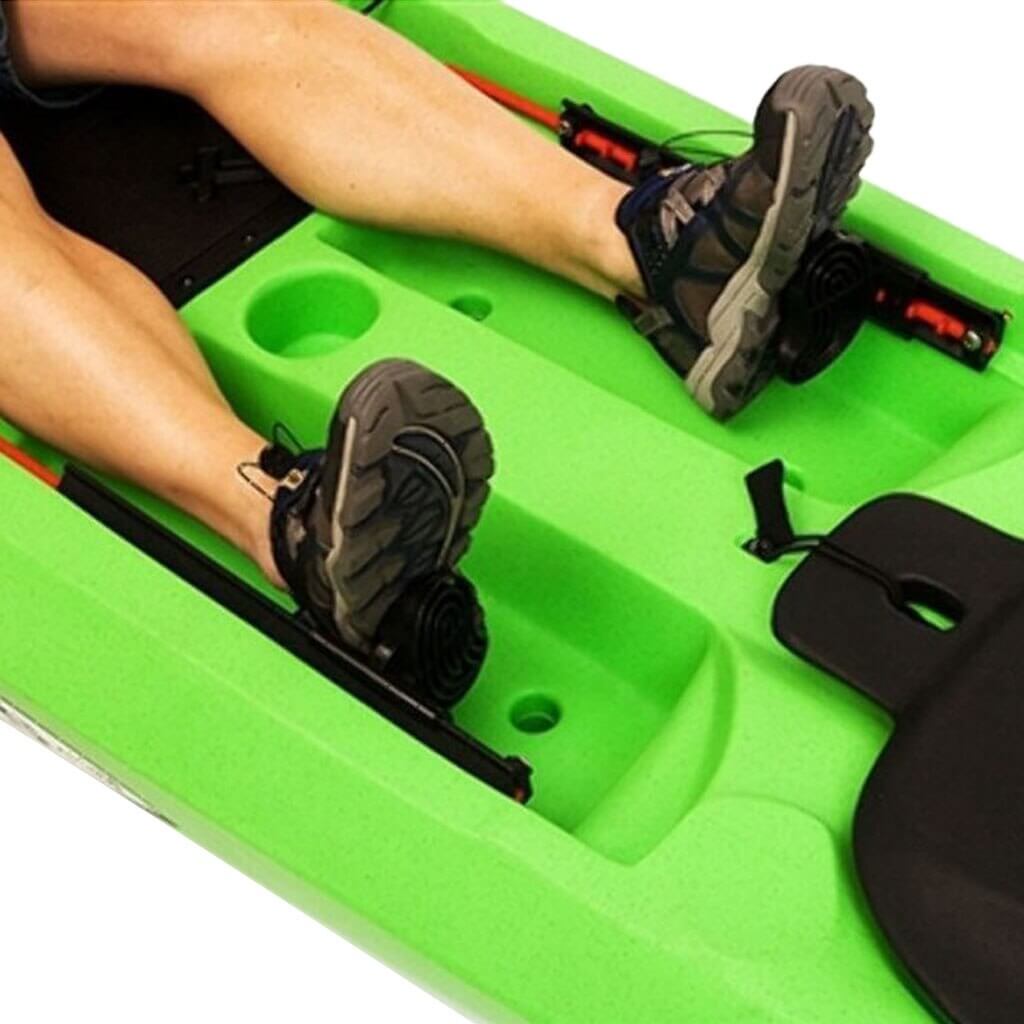
Adjustable footrests are present in the kayak’s cockpit which provide support and comfort to the paddlers.
Forward Stroke
The basic stroke to move the yak in forward direction.
Grab Loops Or Grab Handles
Handles or ropes present on the ends (bow and stern) of the yak which provides an easy grip in portaging.
Hatch
A storage compartment (usually waterproof) is present in the body of the kayak and accessible from the cockpit. They are used to secure items and keep them dry in rough water conditions.
Heading
The direction in which the bow is pointing towards.
Hull
The bottom piece of the kayak.
J-Cradle

A J-shaped accessory used to tie down your kayak securely on the roof rack of the car.
Keel
Bow to stern ridges (strip lines) that run across the bottom centerline of the kayak.
Open Water
A large stretch of water (ocean and sea) which is quite distant from the shore.
Also check our blog on Best Open Water Kayaks.
Paddle
A shaft used to propel in water. Kayaks have paddles with blades on both ends while boats and canoes have paddles with blade at one end.
PFD
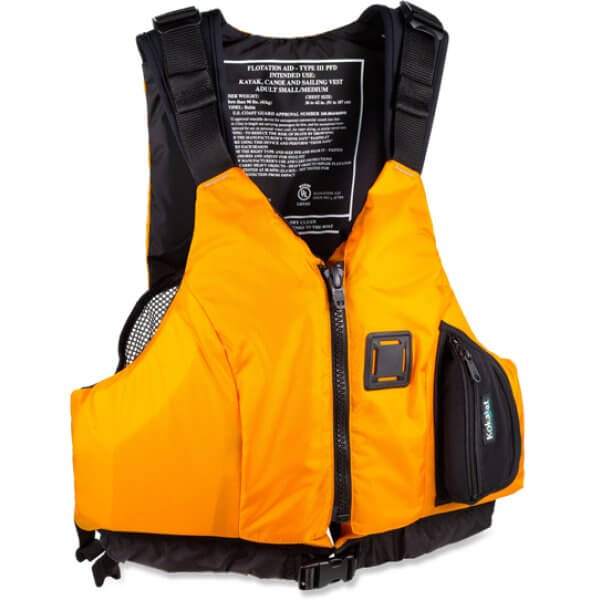
PFD stands for “Personal Floatation Device” also known as a life jacket. It is one of the most important personal safety feature. Always try to wear a Coast-Guard approved PFD.
Check: Best Kayaking PFD
Primary and Secondary Stability
The primary stability of the kayak is the initial steadiness of the kayak on flat water. The secondary stability is the measure of stability when the kayak is edging
Portage
The act of carrying a kayak overland to get from one waterway to another instead of riding it to avoid the rapid and obstructions.
Rapid
A segment of river where the slope increases causing the flow of the water to increase creating more turbulence.
Reading Water
The technique used to find the safest route through turbulent whitewater.
Riffles
Shallow parts of rapids in Class I rivers.
River Right/River Left
The banks of the river are referred to as River Right and River Left while going downstream.
Roll (or Eskimo Roll)
The act of restoring the upright position of the kayak without exiting the cockpit in case of capsizing.
Rocker/Waterline
Rocker means how much the front and back (bow and stern) of the kayak rises. The higher the rocker, the more maneuverable, but slower, the kayak is.
While on the other hand, the waterline is the opposite of the rocker. Waterline indicates how much of a kayak’s hull is submerged in the water. The better the waterline, the faster the kayak will be and will result in efficient tracking.
Rudder

A flat piece present vertically at the stern of the kayak to steer it in water. It is operated by foot pedals or by pulling rope lines on the deck.
Sculling Draw
A paddle stroke used to move the kayak sideways.
Shaft
The long skinny part of the paddle that runs thoroughly from grip to the blade.
Shortie
A PFD (life jacket) with short sleeves.
Skeg
The skeg is a fix designed rudder and helps the kayak to track straight in all conditions.
Spray Skirt
A waterproof neoprene or nylon skirt worn around the waist of the kayakers to keep the cockpit dry in rough water conditions. The skirts are attached to the rims of the cockpit.
Check: Best Kayak Spray Skirts
Stacker
A kayak carrier that allows you to carry several kayaks on the roof of your car.
Stern
The rear end of a kayak.
Strainer
The tree or branches that can trap a kayak but allow the water currents to pass through.
Swamp
When a boat gets filled with water.
Sweep Stroke
A basic paddle stroke to turn your yak. It is accomplished by sweeping the paddle from the bow to the stern.
Tracking
Tracking is the extent of how effectively a kayak stays in a straight line when paddled.
Tandem Kayak
A kayak that is designed for two people.
Tow Leash
A long length rope or leash attached to the waist of the kayaker used to pull him to the shore.
Tricky-Woo
Three consecutive 180-degree horizontal angle rotations done by professionals and free-style kayakers using only a single paddle.
Upstream
The opposite direction of a river’s water flow.
Water Sandals
Waterproof footwear designed specifically for kayaking.
Wet Exit
The act of swimming out of a capsized kayak instead of jumping out.
Whitewater
When the air gets trapped in water and generates turbulence, whitewater is formed.
Frequently Asked Questions (FAQ’s)
A person who kayaks is called a paddler (One who paddles)—a person who propels a canoe or kayak by the action of paddling.
Rocker means how much the front and back (bow and stern) of the kayak rises. The higher the rocker, the more maneuverable, but slower, the kayak is.
A kayak is a slim and small kind of boat that is and is used by a limited number of people, mostly a single person at a time. In some other words, it can also be mentioned as a canoe. It is considered a piece of sports equipment by many, as this particular boat’s major use is generally in sports and aquatic races.
A paddle consists of a shaft with a wider part at one side of the paddle, which pulls through the water to move the yak forward. The blade may be present on both sides of the paddle. The area where the blade and shaft are joined is called the shaft.
A flat bottom kayak comprises a large flat surface that rests on the water, making it very stable. A flat-bottomed kayak offers exceptional primary stability; therefore, it is harder to capsize.

Hi, I’m Randy R. Lios and the owner of Floating Kayaks. I’ve always been adventuresome at heart. From the time, I got my first kayak at age 18 until now when I have multiple kayaks with accessories and spend 5-6 hours researching all the new related stuff in the market. I have always been fond of fishing since my childhood and kayaking is part of my weekend routine.
